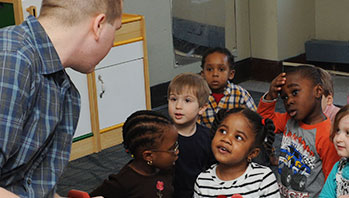- real and artificial plants and flowers
- cultivate
- plant
MA Standards:
English Language Arts/Speaking and Listening/SL.PK.MA.1: Participate in collaborative conversations with diverse partners during daily routines and play.
English Language Arts/Language/L.PK.MA.1: Demonstrate use of oral language in informal everyday activities.
English Language Arts/Language/L.PK.MA.6: Use words and phrases acquired through conversations, listening to books read aloud, activities, and play.
Head Start Outcomes
Language Development/Receptive Language: Attends to language during conversations, songs, stories, or other learning experiences.
Language Development/Expressive Language: Uses language to express ideas and needs.
Logic and Reasoning/Reasoning and Problem Solving: Classifies, compares, and contrasts objects, events, and experiences.
PreK Learning Guidelines:
English Language Arts/Language 2: Participate actively in discussions, listen to the ideas of others, and ask and answer relevant questions.
Science and Technology/Living Things and Their Environment 15: Use their senses of sight, hearing, touch, smell, and taste to explore their environment using sensory vocabulary.
Talk Together: Comparing Plants

© Commonwealth of Massachusetts, Department of Early Education and Care (Jennifer Waddell photographer). All rights reserved.
ELA Focus Skills: Compare and Contrast, Listening and Speaking, Vocabulary
Display different types of plants and flowers for children to compare. Invite children to explore the plants and flowers using their senses: Encourage them to touch, smell, and look closely at the parts of the plants. Talk with children about the plants and flowers. Ask, How are the plants the same? How are they different?
- Encourage children to use vocabulary they have been learning during the unit, such as leaves and plants, and any descriptive words, such as smooth, shiny, etc., to articulate the differences between the plants.
- Review how some plants grow naturally in their environment and other plants are planted and grown by people in gardens (cultivated).
